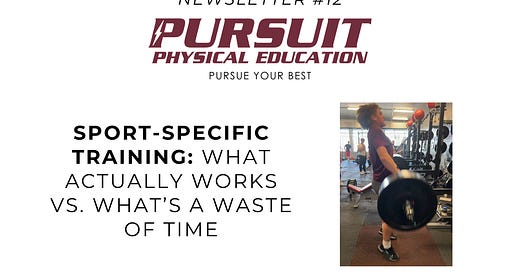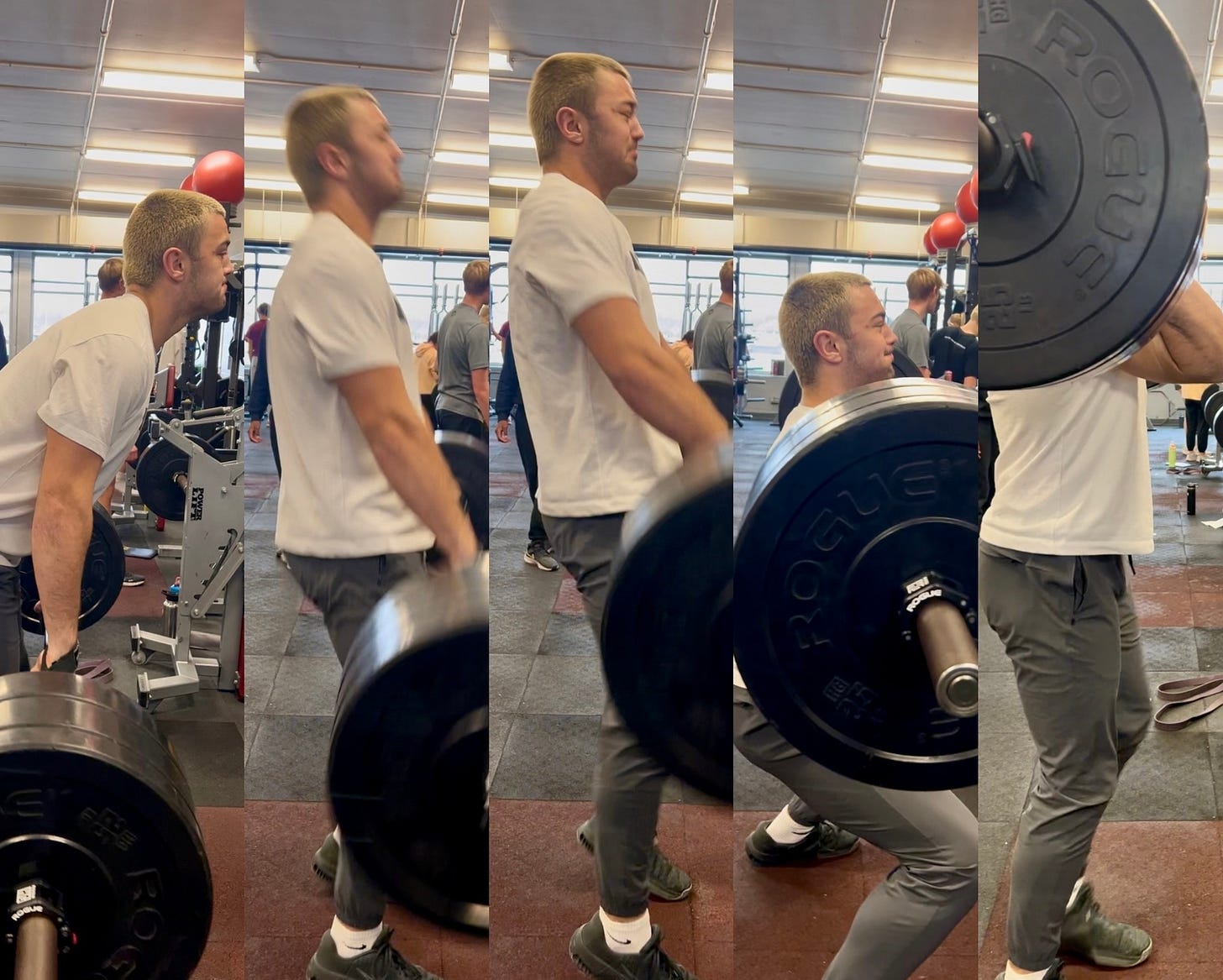Sport-Specific Training: What Actually Works vs. What’s a Waste of Time
#12 - Strength & Speed Coaching – Pursuing Your Best ⚡
Hey everyone, Preston here—welcome back to Pursuit PE.
Last time, we broke down why most high school speed training falls short and how to fix it. Today, we’re tackling a controversial topic in Strength & Speed coaching:
Sport-Specific Training
- Should football players train differently than basketball players?
- How much sport-specific work actually helps?
- What’s useful—and what’s just a gimmick?
Let’s separate what actually develops athletes from what just looks good on social media.
The 5 Biggest Sport-Specific Training Mistakes
1. Over-Emphasizing “Sport-Specific” Lifts Instead of Athletic Development
The Problem: Some coaches try too hard to make weight room exercises look like sport movements—swinging weighted bats, shooting with resistance bands, or mimicking throwing motions with cables.
Why It’s an Issue: Strength & Speed training should develop athletic qualities (speed, power, strength, movement efficiency)—not just rehearse sport skills under load.
The Fix:
Train fundamental movement patterns—squat, hinge, lunge, push, pull, sprint, jump, and throw.
Build general strength & power first—then let skill coaches refine the mechanics of sport-specific movements.
Use athletic-based power exercises (sprints, plyometrics, med ball throws, loaded jumps, Olympic variations) instead of trying to mimic sport mechanics with resistance.
Key Takeaway: Athletes need to train movement qualities—not just rehearse their sport with extra weight.
2. Training Athletes Based on Sport Instead of Individual Needs
The Problem: Many coaches believe every sport (or even position) needs a completely different training program.
Why It’s an Issue: While some adjustments are necessary, athletic qualities (speed, power, strength) are universal. Training should focus on the athlete, not just the sport.
The Fix:
Use a Unified Framework – Strength & Speed training should build better overall athletes, not just “football players” or “basketball players.”
Adjust Based on Training Age & Experience – A freshman football player and a freshman soccer player likely need similar training. The difference? Not the sport, but their experience level.
Utilize In-Season Adjustments Instead of Sport-Specific Programs – Use the stoplight system to modify intensity/load based on game schedules instead of designing entirely separate programs.
Key Takeaway: Athletes need to be trained as athletes first. Let sport coaches handle sport-specific skills.
Not a paid subscriber yet? Upgrade here to unlock the full breakdown and exclusive resources!
Keep reading with a 7-day free trial
Subscribe to Pursuit PE to keep reading this post and get 7 days of free access to the full post archives.




